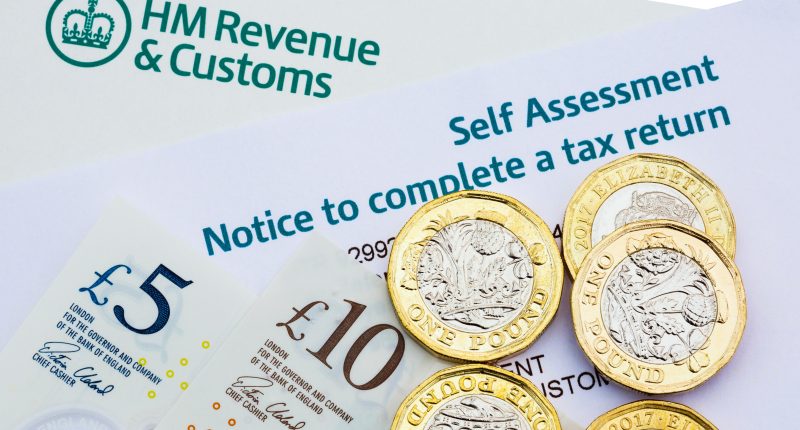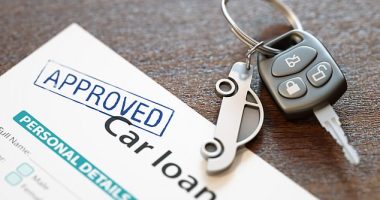WORKERS will be racing to fill in their self-assessment tax returns before next week’s deadline.
It’s estimated that around 3.8million people are yet to fill in their tax return by January 31.
HM Revenue and Customs (HMRC) is expecting more than 12.1million tax returns to be filed for the 2022 to 2023 tax year along with any payment that is owed.
Those who miss the self-assessment deadline risk a fine of £100 if their tax return is up to three months late.
You also face further fines of £10 a day after three months, up to a maximum of £900.
If you’re six months late making your payment, you’ll be fined 5% of the tax you owe or £300, whichever is greater.
READ MORE IN MONEY
It’s worth noting though HMRC will consider a customer’s reasons for not being able to meet the deadline.
Those who provide a reasonable excuse may avoid a penalty.
People should also be aware that scammers may use the deadline to try to trick them.
HMRC has warned that workers should never share their HMRC login details with anyone, including a tax agent if they have one.
Most read in Money
Who needs to fill out a self-assessment tax return?
YOU’LL need to submit a tax return if any of the following applied to you in the 2022/2023 tax year:
- You were self-employed and your income was more than £1,000
- You had multiple sources of income over £1,000
- You earned £10,000 or more before tax from savings, investments, shares or dividends
- You claimed Child Benefit when you or your partner earned more than £50,000 a year.
- You earned more than £2,500 from renting out property, or from other untaxed income, such as tips or commission
- You earned more than £100,000 in taxable income
- You earned income from abroad or lived abroad and had a UK income
- You need to pay capital gains tax
- You received income from a trust
- Your state pension was more than your personal allowance and was your only source of income (unless you started getting your pension on or after 6 April 2016)
- HMRC has told you that you didn’t pay enough tax last year (and you haven’t already paid up through your tax code or via voluntary payments)
- You filed a self-assessment tax return for the 2021/22 tax year (even if you didn’t owe any tax)
- You were self-employed and earning less than £1,000 but you still want to pay ‘class 2’ national insurance contributions voluntarily to protect your entitlement to the state pension and certain benefits
Myrtle Lloyd, HMRC’s director general for customer services, said: “If you are a self-assessment taxpayer, now is the time to take action and get your return done.
“Once a tax return is submitted, it’s easy to find out what’s owed and to pay online or using the HMRC app. Just search ‘pay my self-assessment’ on gov.uk to find out more.”
If you’re struggling to complete your tax return or are unsure where to start we’ve got some handy tips for you.
Be prepared
HMRC uses the self-assessment system to collect income tax.
Tax is usually deducted automatically from wages, pensions and savings, but people and businesses with other incomes must report it in a tax return.
Before you can complete and submit your tax return, you’ll need to have a so-called unique taxpayer reference (UTR) and activation code from HMRC.
This can take a while to receive, so if it’s the first time you’re completing a self-assessment, make sure you register online immediately and ask HMRC for advice.
To sign in or register visit the self-assessment tax return section of HMRC’s website.
If you’ve already signed up for self-assessment, you can find your UTR in relevant letters and emails from HMRC.
HMRC accepts your payment on the date you make it, not the date it reaches its account – including on weekends.
Gather all the information and documents you need
Make sure you gather all of the expenses and documents relating to your income.
Having these to hand will help you race through the process.
This includes your UTR and your National Insurance number.
The form also includes bank statements and details of untaxed income from the year, which might involve finding your P60 (if you earned more than £8,500), your P11D (which has information about expenses and benefits), and payslips.
If you’re self-employed, you’ll need records of your income and receipts for expenses.
You will also need interest statements from banks and building societies, and details of pension contributions made.
If you need third parties to provide you with statements and documents, you should contact them right away as this can take time.
Fill in the form
Once you log in to complete your online tax return, you should begin by checking your personal details.
You should then choose to fill in the sections that fit your circumstances.
With an online tax return, HMRC’s system will react to the answers you give as you put them in.
This might mean, for example, that sections that are not relevant to you are removed.
When filling in the figures, the online system gives reminders about where you can find the information to fill in particular sections.
As a self-assessment taxpayer, you need to report everything you’ve earned over the tax year from April 6, 2022, to April 5, 2023.
This includes income from employment, self-employment, income from property, and interest and gains on your savings and investments.
Remember to also claim all the deductions you are entitled to, including gift aid on your charitable contributions and membership costs for zoos and museums.
If you are a member of a professional body that is required for your employment, you can include the cost of the subscription as a deduction.
Those who are self-employed can also claim back the running costs of a car, but not the cost of buying one.
Your tax will be calculated automatically as you fill in the return.
Take your time and double-check your return
Once you’ve filled in the empty fields, check all your numbers thoroughly before pressing submit.
When filing online, you can save your tax return at any time, so if you need to go away and double-check your figures, do so.
When you are happy that everything is correct, you can press send.
If you need to change your tax return after you’ve filed it, you can do so within 12 months of the original deadline or you can write to HMRC for any changes after that.
Don’t be afraid to ask for help
If you need help with your return, visit the GOV.UK website or call the helpline on 0300 200 3310.
There are HMRC guidance notes and manuals online, but if you’re struggling you could seek advice from an accountant or tax adviser.
Consumer group Which? also offers an online self-assessment tool that does the calculations for a tax return and submits it directly to HMRC.
You have to fork out £10 for the service though, or £36 if you’re not a member.
If the tax bill is unexpected, check your tax code
When you submit your return, if you find that the amount of tax due (or any refund of overpaid tax) is not what you expected, the reason may be an incorrect tax code.
If you suspect that the code is incorrect, call HMRC straight away.
This is the only way to rectify the mistake as the code won’t be amended automatically as a result of filing the return.
HMRC should issue a new code to you and your employer within a few days.
Pay your bill
Once you’ve submitted your tax return, you will be told how much tax and, if you’re self-employed, National Insurance Contributions (NICs) you will need to pay.
HMRC accepts your payment on the date you make it, not the date it reaches its account – including on weekends.
If you can’t afford your tax bill, you should still file your return, as the fines for late payment are lower than the fines for late filing.
You might also be able to avoid penalties and set up a payment plan to pay in instalments, but you should contact HMRC as soon as possible.
You can do so by calling the Business Payment Support Service on 0300 200 3835.
Don’t be late
Late filing fees are pretty steep, so make sure you get your self-assessment return in on time.
According to HMRC, you’ll get a £100 fine for failing to file your return a single day after the deadline.
Then, a £10 daily fine applies every day you don’t submit your tax return.
This is capped at 90 days – or £900.
So on top of the initial £100 fee, a £1,000 maximum late filing fine applies.
If you’re six months late, there’s a further £300 fine or 5% of the money you owe – whichever is higher.
That’s on top of the daily £10 charges built up so far, so there’s no shortcut to a smaller payment once you’re late.
And after 12 months, another £300 or 5% fine applies.
Interest is also added on top of this – and that went up last week, so late payers have even more to fork out now.
If you deliberately haven’t filed your tax return, a fine of up to 100% of the tax due could then be sent too.
READ MORE SUN STORIES
Meanwhile, millions of people will see tax changes in 2024 that affect both their income and savings.
Plus, Brits could be caught out by some simple tax mistakes that could cost up to £900.
Do you have a money problem that needs sorting? Get in touch by emailing [email protected].
Plus, you can join our Sun Money Chats and Tips Facebook group to share your tips and stories.










